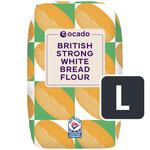- Recipes
- Nigella's Maritozzi

Nigella's Maritozzi
-
8 serving
Prep time:
Cook time:
Serves: 8
Share recipe
Ingredients
- 125g organic whole milk
- 250g strong white bread flour, plus up to 25g more
- 25g caster sugar, plus 2 tsp for the sponge and 2 tbsp for the glaze
- 1 (7g) sachet easy bake yeast
- 1 large free-range egg, at room temperature
- 30g olive oil, plus a little more for the kitchen surface
- ½ orange, zest finely grated
- ½ unwaxed lemon, zest finely grated
- 200ml double cream
- 10g icing sugar, sieved
Method
Step 1
To make the sponge, first warm the milk to about 38°C. If you don’t have a thermometer, just aim for slightly above body temperature: it needs to feel warm rather than hot when you dip a finger in. I find that 30 secs in the microwave at 900W (with milk straight from the fridge) does the trick.
Step 2
Mix 25g of the 250g flour with the 2 tsp caster sugar and sachet of yeast in a bowl and then, once your milk is at the correct temperature, whisk it in. Cover and leave for 20 mins, by which time it will have risen and thickened and look rather like puffy porridge.
Step 3
The sponge done, it’s time to get on with the main dough. Mix the remaining 225g flour with the 25g sugar and a pinch of fine salt in a large mixing bowl. Add the risen sponge mixture and combine by hand with a spoon or large spatula. Whisk together the egg and olive oil and mix that in too, followed by the orange and lemon zest, until a messy, soft clump of dough starts to form. It will be sticky, but you don’t want it too wet, so if the dough won’t form into a rough ball, gradually add more flour until it just about does. You certainly shouldn’t need more than an extra 25g – most likely it’ll be less.
Step 4
Leave the ramshackle dough ball in the bowl, cover with a clean tea towel; leave for 10 mins. Then, pour a little oil over the kitchen surface, spreading it out with your hand to cover a space the size of a chopping board thinly (don’t create an oil slick) for you to knead on.
Step 5
Knead the dough by hand for 10 secs – the first knead will be the stickiest! – then form it into a ball again, pop it back in its bowl, cover again and leave for another 10 mins. Then, knead it again for 10 secs (adding a little more oil to the kitchen surface if needed) before reforming into a ball and leaving it covered in its bowl for another 10 mins. Then do your third and final 10-sec knead – you’ll feel how much more springy and alive your dough is to the touch now! Form into a neat ball and leave it in a warmish place for an hour, or until it’s risen voluminously and at least doubled in size; if it’s cold in your kitchen, it will just take longer. While the dough’s proving, line a flat baking sheet with baking paper.
Step 6
When your dough’s ready, divide it equally into 8 pieces of about 60g each. Shape each piece of dough into a small round ball and put each ball onto the baking paper-lined sheet, leaving a 4-5cm gap between each.
Step 7
Cover the 8 little dough balls with a clean tea towel; leave for 30-45 mins (depending on how warm it is) until they have risen more and look puffy.
Step 8
For the glaze, put the remaining 2 tbsp sugar and 2 tbsp water into a small saucepan and heat to a bubble, then boil the mixture for 1 min before taking it off the heat.
Step 9
When you’re nearing the final 30 mins of proving time, preheat the oven to 200°C/180°C fan/gas 6. Uncover the puffy buns, then cook them in the oven for 12-14 mins, by which time they’ll be dark gold and firm on top. Turn one over and give it a tap on the bottom – it should feel light and hollow.
Step 10
When the buns are ready, take them out and put them onto a cooling rack. Use a pastry brush to paint them generously with the sugar syrup glaze to make them very glossy. You can use the sheet of baking paper the buns were baked on under the rack to catch drips. Once they’re all glazed, leave to cool.
Step 11
When the buns are cool, whip the cream and icing sugar until softly thickened and airy, but not stiff, and then cut the buns with a bread knife, from the top downwards, nearly all the way through but still joined together at the bottom.
Step 12
Prising the halves apart a little, and fanning them out more at the top, use a teaspoon to fill each bun with a stripe of cream, then smooth the cream with a small cranked palette knife so that it sits neatly flush with the top of the bun, wiping away any overspill. Once filled, these must be eaten straight away or within a couple of hours. If you absolutely need to, you can make them a day ahead if you leave them whole and wrapped airtight (though they will lose most of their gloss) then split and fill just before serving.
Tips or serving suggestions
Allow around 2 hrs resting and proving time, plus time for the glazed buns to cool before filling.
Shop the ingredients
-
On OfferOfferSave 15%, was £1.50LIFE 3d
Ocado Oranges 5 per pack
5 per pack£1.27
£1.50 25.4p eachFor over 10,000 products you know (and love), we now match the price of your like-for-like shop to tesco.com, including promotions and Clubcard prices. If we’re not already the same price or less, we’ll email you a voucher for the difference within 72 hours. Save 15%, was £1.50 -
ValueLIFE 5d
Ocado British Double Cream 300ml
300ml£1.35
45p per 100mlFor over 10,000 products you know (and love), we now match the price of your like-for-like shop to tesco.com, including promotions and Clubcard prices. If we’re not already the same price or less, we’ll email you a voucher for the difference within 72 hours. Everyday Savers -
Value
Ocado Olive Oil 1L
1L£7.80
78p per 100mlFor over 10,000 products you know (and love), we now match the price of your like-for-like shop to tesco.com, including promotions and Clubcard prices. If we’re not already the same price or less, we’ll email you a voucher for the difference within 72 hours. Everyday Savers -
OtherLIFE 1w+
Ocado Large Free Range Eggs 6 per pack
6 per pack£1.85
30.8p eachFor over 10,000 products you know (and love), we now match the price of your like-for-like shop to tesco.com, including promotions and Clubcard prices. If we’re not already the same price or less, we’ll email you a voucher for the difference within 72 hours. -
LIFE 6d
Ocado Organic British Whole Milk 2 Pints 1.136L
1.136L£1.55
£1.36 per litreFor over 10,000 products you know (and love), we now match the price of your like-for-like shop to tesco.com, including promotions and Clubcard prices. If we’re not already the same price or less, we’ll email you a voucher for the difference within 72 hours. -
Ocado British Strong White Bread Flour 1.5kg
1.5kg£1.35
90p per kgFor over 10,000 products you know (and love), we now match the price of your like-for-like shop to tesco.com, including promotions and Clubcard prices. If we’re not already the same price or less, we’ll email you a voucher for the difference within 72 hours.
































